August means harvest time, and even in a small garden there’s plenty of work to do to bring garden treasures in for the season. Harvesting grains can be a bit time consuming, but it is particularly satisfying when the process is over. After all the chaff is removed, you have a finished product that can be used to make cereals, breads, pie crusts, and other baked goods through winter.
We grew triticale this spring and just harvested it this week. Now it’s time to prepare it for the pantry. Here’s a step-by-step guide to harvesting your grains this season.
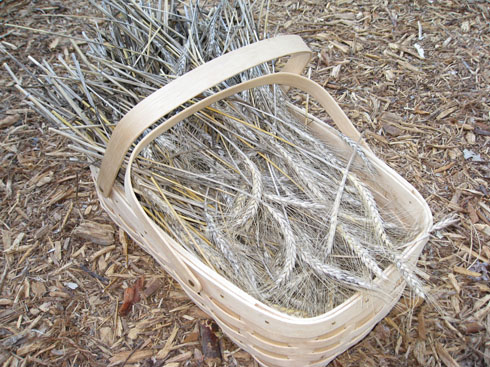
Triticale harvest from a 4×4 square foot bed.
Harvesting – In small space gardens, you can do this by hand. Gather a bouquet of stalks together and cut them off with pruning shears, leaving at least a foot on stalk attached. The photo above shows our harvest. It doesn’t look like much, but it actually turns out to be a fair amount of grain.
Threshing – The easiest way to remove the grains from stalks (aside from using heavy machinery) is to use your feet. Grab a handful of stalks with all the seed heads at one end. Place them into a box or large bin with sides. Step on the stalks to hold them in place.
Then use the other foot to rub the seed heads back and forth. This will extract the grains from the seed heads. Some grains are more “hull-less” than others, meaning they come out of the hulls easily. Triticale is moderately easy to separate.
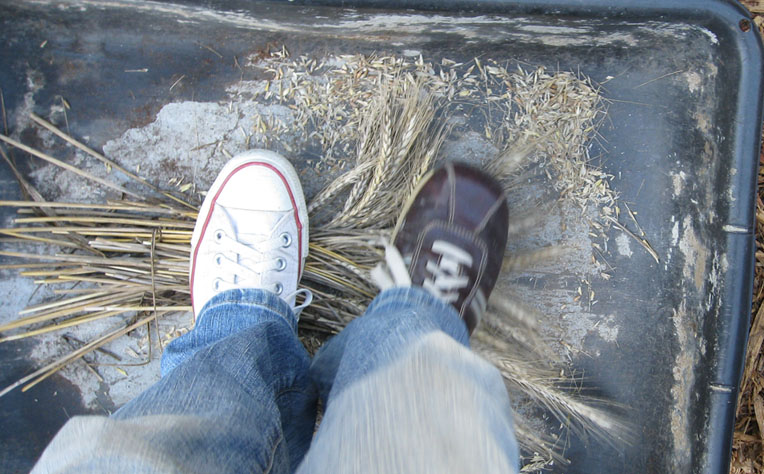
Note: use shoes with low tread or else the grains will get caught in the bottom of your shoe.
We tried a couple different shoes to see which one worked best. Converse All-Stars are pretty good!
Once the bulk of the seed heads have been separated it’s time to winnow.
Winnowing: This is the process of separating grain from chaff. It helps to have a box fan handy, but you can do this on a breezy day too. We set up a fan on top of a container so that it points to the top of our collection bucket. Using another bucket, pour the grains from one bucket to the other, in front of the fan.
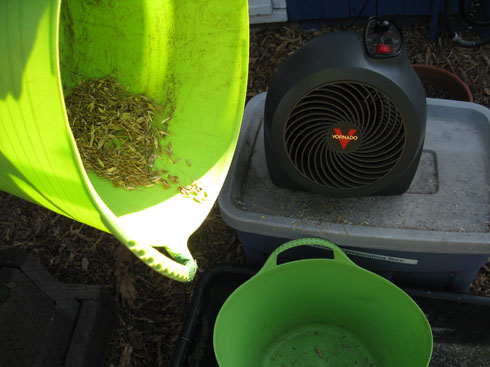
We also set the bottom bucket into a large container in case we spill.
The chaff blows away and the grain, being heavier, falls into the bucket below. You may have to repeat this a few times to get rid of most of the chaff. Winnowing rarely gets out all of the chaff, but it does a great job of thinning it out. The result is clean grain.
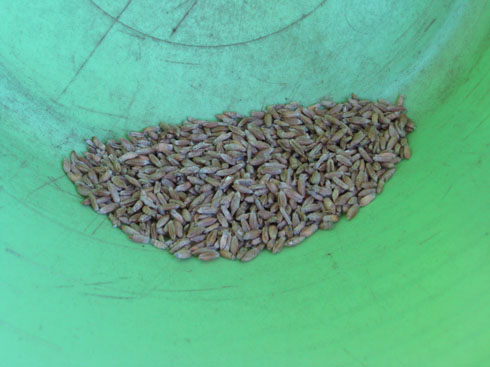
Our first batch of cleaned triticale
We have a ways to go to finish, but we’ll report back on how much the complete harvest weighs later this week.
Storage: At this point we usually put the grain in the freezer for a few days to kill off any microscopic critters before storing it in a lock-lid jar in the pantry. We’ll grind it up as needed and use it for baked goods when the weather turns cooler.
Hey gardenerds, did you grow grains this season? Did it work? Would you do it again? Share your harvest results here.

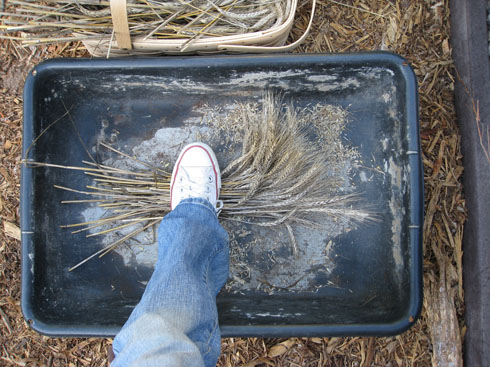
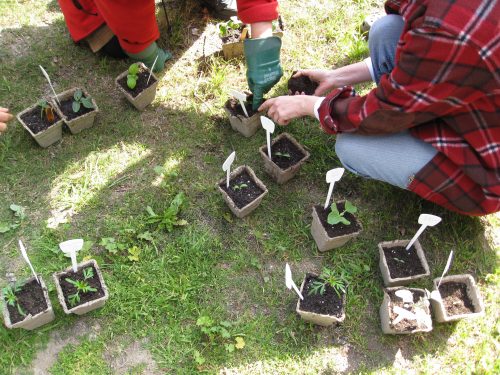
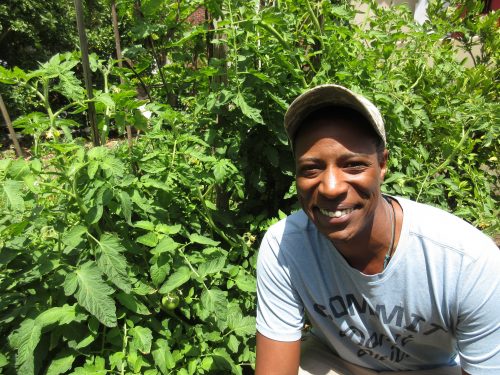

Pingback: Harvesting Wheat - Gardenerd
Pingback: Saving Carrot Seeds | Gardenerd
Excellent! Quinoa is also a great one to try.
This has inspired me to try growing grains next spring. Thanks!